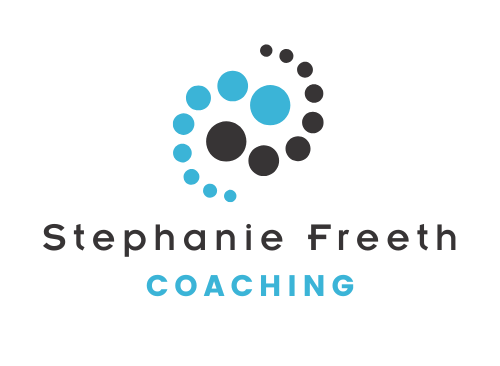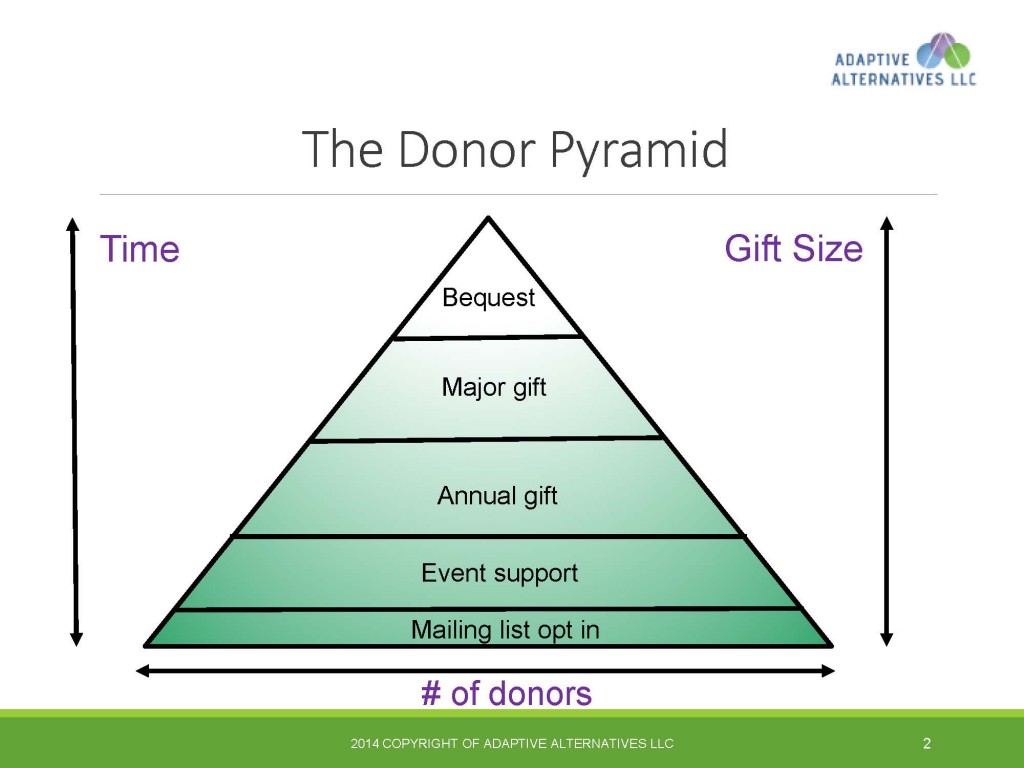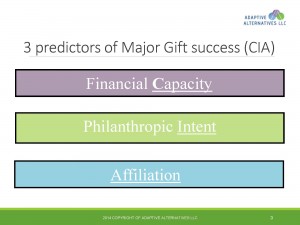There is one quote I love to use when working with nonprofit clients to start or strengthen their individual major gift program:
“There is no magic drawer of prospects.”
I learned this quite useful concept from my first fundraising manager, Liz Livingston Howard, who taught me many important things about major gift fundraising in particular. I was lucky to have Liz as a professor for a fundraising course at the Kellogg School of Management where I got my MBA. After graduation I went to work for Liz as the Kellogg School’s first major gift officer. That’s where I learned what it really takes to build the infrastructure of a sustainable major gift program.
What Liz meant by, “There is no magic drawer of prospects,” is that when an organization sets out with a goal to raise large gifts from individuals, there’s no one simple way to do it quickly. Fundraising staff and volunteers can’t just open a desk drawer and say, “Aha! Here are the 25 people we need to solicit today to raise $2 million by next Thursday!”
Major gift fundraising takes time, preparation, research, strategy, persistence, thoughtfulness, and always benefits from good timing and a little luck. Major gift work is not easily scalable. Webster’s dictionary defines scalable as “capable of being easily expanded or upgraded on demand.”
Instead, I have found that major gift work requires thoughtful, peer-to-peer relationship building towards a common purpose to achieve a certain financial goal in a set timeframe. Done right, it’s not transactional, but transformational–for the donor and for the organization.
In her fundraising course, Liz packed in years worth of learning in a half trimester course. Here are three of the foundational fundraising concepts that I learned from Liz and always reference when working with clients:
1) The 4 Step Donor Development Cycle: Identification, Cultivation, Solicitation, Stewardship
While those who have not done major gift fundraising before may think of the whole process as just solicitation, that’s far from the truth. For major gift work, solicitation is just a small part of the process that may include years of cultivation and stewardship. When donors are well stewarded (aka sincerely and repeatedly thanked) after they have made a gift, it’s much more likely that this cycle repeats itself and another gift is possible and even likely. Many organizations get the identification, cultivation and solicitation stages right but then neglect stewardship. When it comes time for the next campaign, they may learn that they have alienated their donors who feel unappreciated since making their last gift. Thankfully, there are lots of ways to avoid this phenomenon when building the right infrastructure for a sustainable major gift program.
2) The Donor Pyramid: How to grow your donor base over time
When an organization grows their donor base, there is an interesting interplay between time, the number of donors and the size of gifts. Bequests (when someone leaves a legacy by remembering a beloved organization in their will) are the ultimate gift. Bequests are at the top of the donor pyramid because: 1) there are relatively few people who make a bequest to an organization; 2) they take many years to cultivate; and 3) the gift size is often larger than gifts during a donor’s lifetime.
But nonprofit organizations need to build their donor base by starting at the bottom of the pyramid. Successful fundraising operations work with donors in a way where those donors choose to become more involved and make larger gifts over time. Understanding the donor pyramid is crucial for nonprofit staff members, board members, and volunteers who want to fulfill their missions, supported by growing numbers of donors and larger gift sizes over time.
3) Interlinked Predictors of Major Gift success: CIA
CIA stands for the Financial Capacity of the donor, the Philanthropic Intent of the donor, and the donor’s Affiliation to an organization. All 3 of these are important predictors of whether a donor will make a major gift to an organization.
To learn more about a prospect’s Financial Capacity and Philanthropic Intent, good prospect research is key. There are a variety of tools these days that help with the art and science of prospect research. One of my favorite new tools is Relationship Science (RelSci), which is worth a whole separate blog post.
While Financial Capacity and Philanthropic Intent are fairly fixed over time, nonprofits can increase their donors’ Affiliation with their organization through good cultivation and stewardship.
Without all three of these elements, the likelihood of raising major gifts falls. Just because Bill Gates has Financial Capacity and Philanthropic Intent in spades doesn’t mean he has an Affiliation to your organization and should therefore be on your top prospect list.
If there’s no magic drawer of prospects, then how do you raise major gifts?
While there may not be a magic drawer of major gift prospects, there ARE proven strategies and systems to put in place that will yield significant major gifts over time. Again, I have seen that major gift work requires thoughtful, peer-to-peer relationship building towards a common purpose to achieve a certain financial goal in a set timeframe.
If you’re curious to learn more, contact me anytime at stephanie@adaptivealt.com or 734-548-7710. I’d love to hear more about your organization’s journey to cultivate more donors who are truly excited about the transformational work you can do together to create social change.



